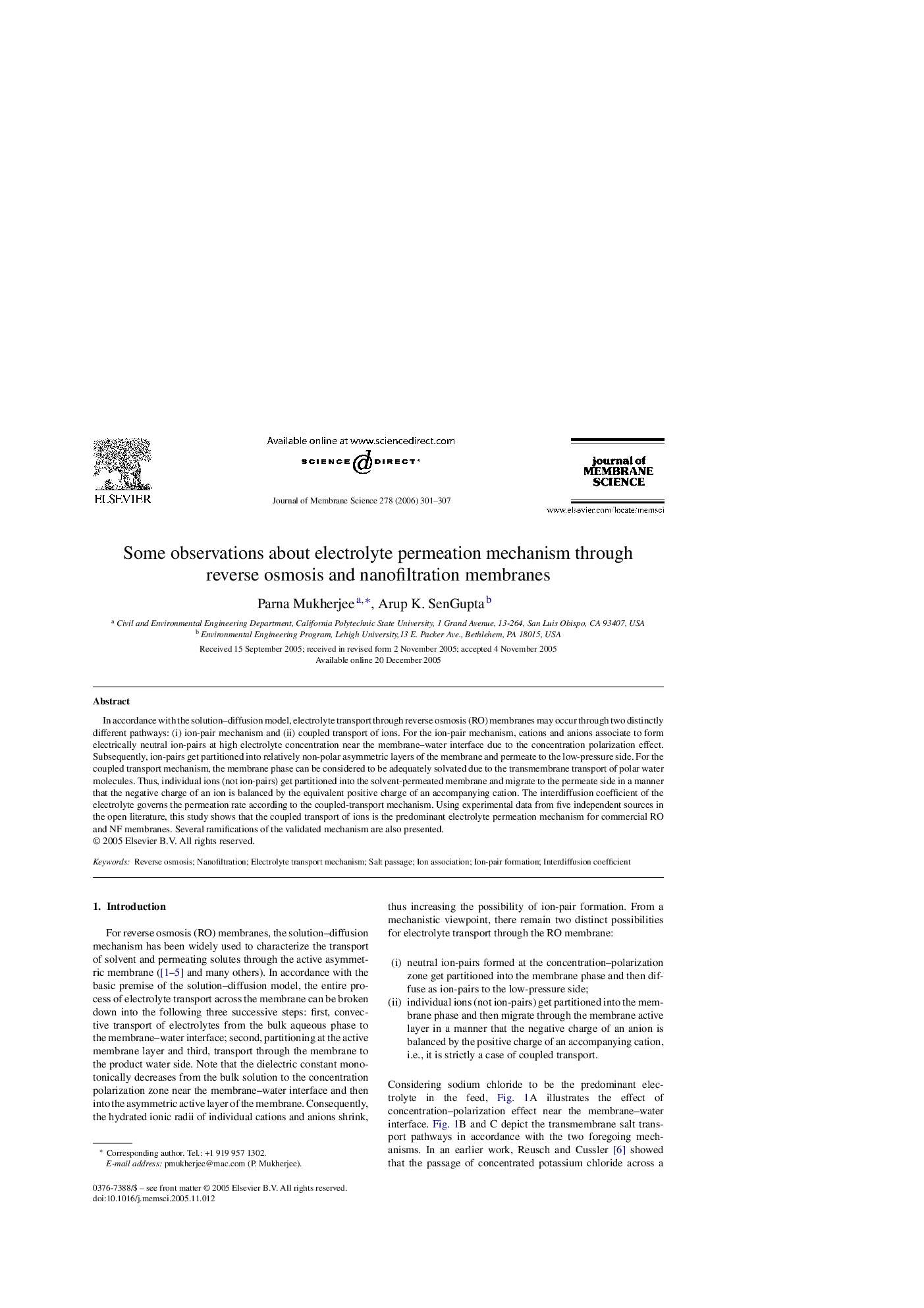| Article ID | Journal | Published Year | Pages | File Type |
|---|---|---|---|---|
| 639553 | Journal of Membrane Science | 2006 | 7 Pages |
Abstract
In accordance with the solution-diffusion model, electrolyte transport through reverse osmosis (RO) membranes may occur through two distinctly different pathways: (i) ion-pair mechanism and (ii) coupled transport of ions. For the ion-pair mechanism, cations and anions associate to form electrically neutral ion-pairs at high electrolyte concentration near the membrane-water interface due to the concentration polarization effect. Subsequently, ion-pairs get partitioned into relatively non-polar asymmetric layers of the membrane and permeate to the low-pressure side. For the coupled transport mechanism, the membrane phase can be considered to be adequately solvated due to the transmembrane transport of polar water molecules. Thus, individual ions (not ion-pairs) get partitioned into the solvent-permeated membrane and migrate to the permeate side in a manner that the negative charge of an ion is balanced by the equivalent positive charge of an accompanying cation. The interdiffusion coefficient of the electrolyte governs the permeation rate according to the coupled-transport mechanism. Using experimental data from five independent sources in the open literature, this study shows that the coupled transport of ions is the predominant electrolyte permeation mechanism for commercial RO and NF membranes. Several ramifications of the validated mechanism are also presented.
Keywords
Related Topics
Physical Sciences and Engineering
Chemical Engineering
Filtration and Separation
Authors
Parna Mukherjee, Arup K. SenGupta,
